TSMPHOP
Travelling Salesman with Multiple Passengers and High Occupancy Problem
This page contains additional data regarding the computational experiment presented in the article "Evolutionary Algorithms for the Traveling Salesman with Multiple Passengers and High Occupancy Problem", which was submitted to the 2020 IEEE Congress on Evolutionary Computation.
Instances
The zip file with the generator and dataset files can be downloaded here.
Tables
Tables A and B exhibit the values obtained in the unlimited and limited experiments, respectively. The first column identifies the instance; the next three show the Solver results, beginning with the gap reported when it was not possible to find the optimal solution. Next, we have the value of the found solution, and lastly comes the running time measured in seconds. The fifth column displays the minimum found by the GA algorithm, while the sixth one comprises the median of the values found on the executions. The next column exhibits the average processing time for the GA executions. The remaining columns introduce these same metrics for the MA, TGA, and TGALS algorithms.
TABLE A
Unlimited experiment
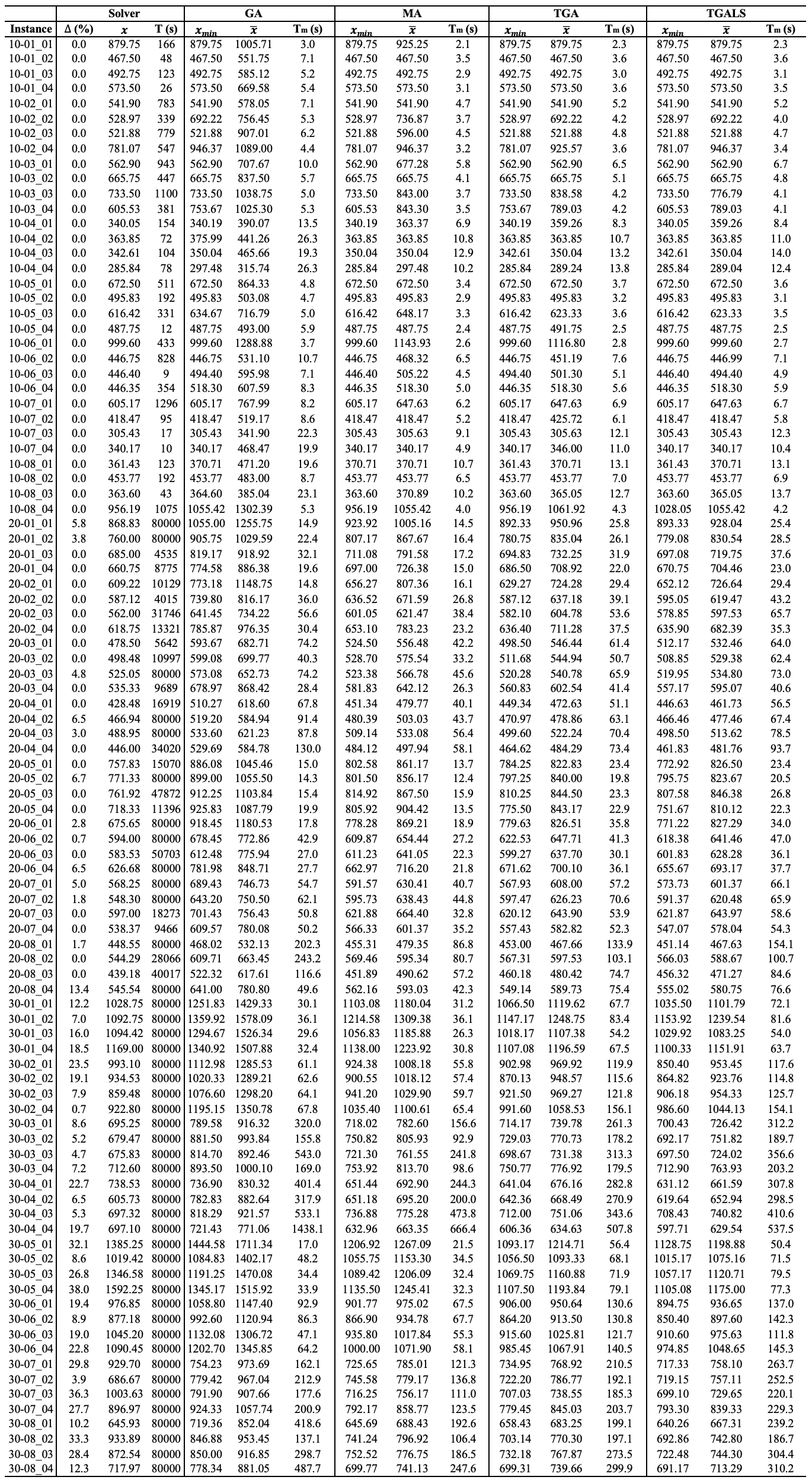
TABLE B
Limited experiment
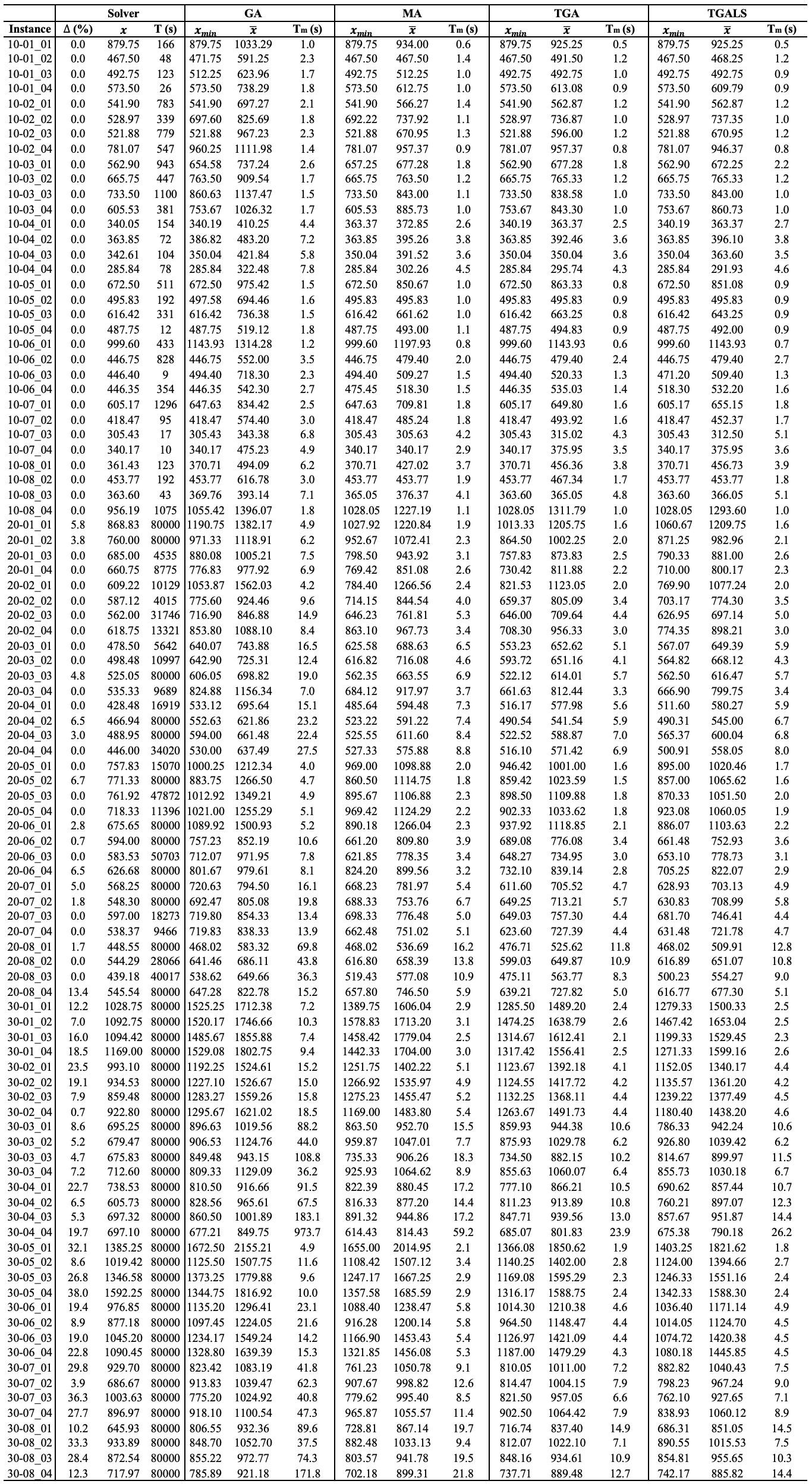
Table C exhibits the p-values obtained in the analysis executed by Friedman post-hoc tests with the Bergmann and Hommel’s correction for the gap G. Table D also shows p-values but for the processing time T. These tables contain data related to both experiments.
TABLE C
Statistical analysis: G
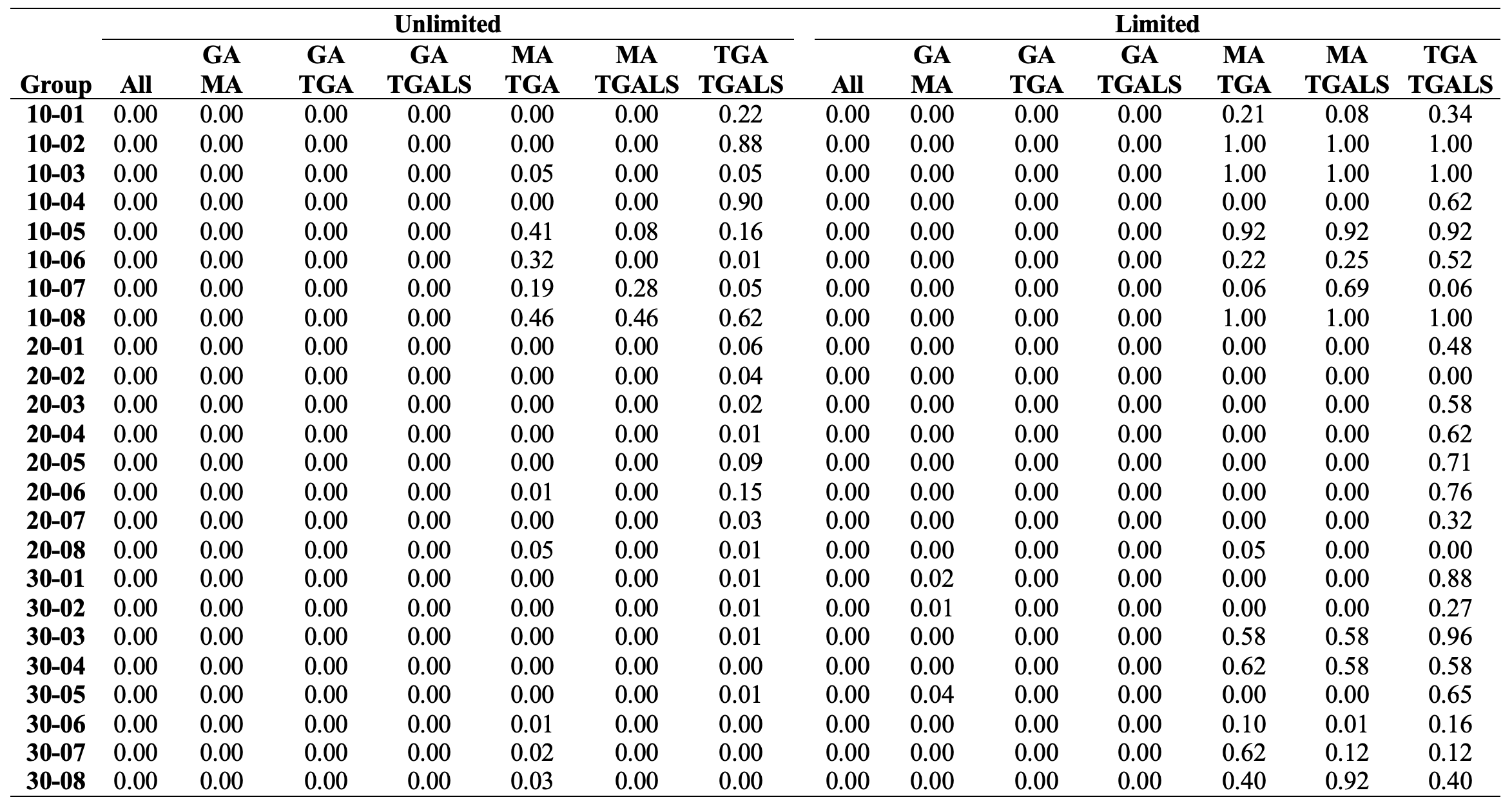
TABLE D
Statistical analysis: T
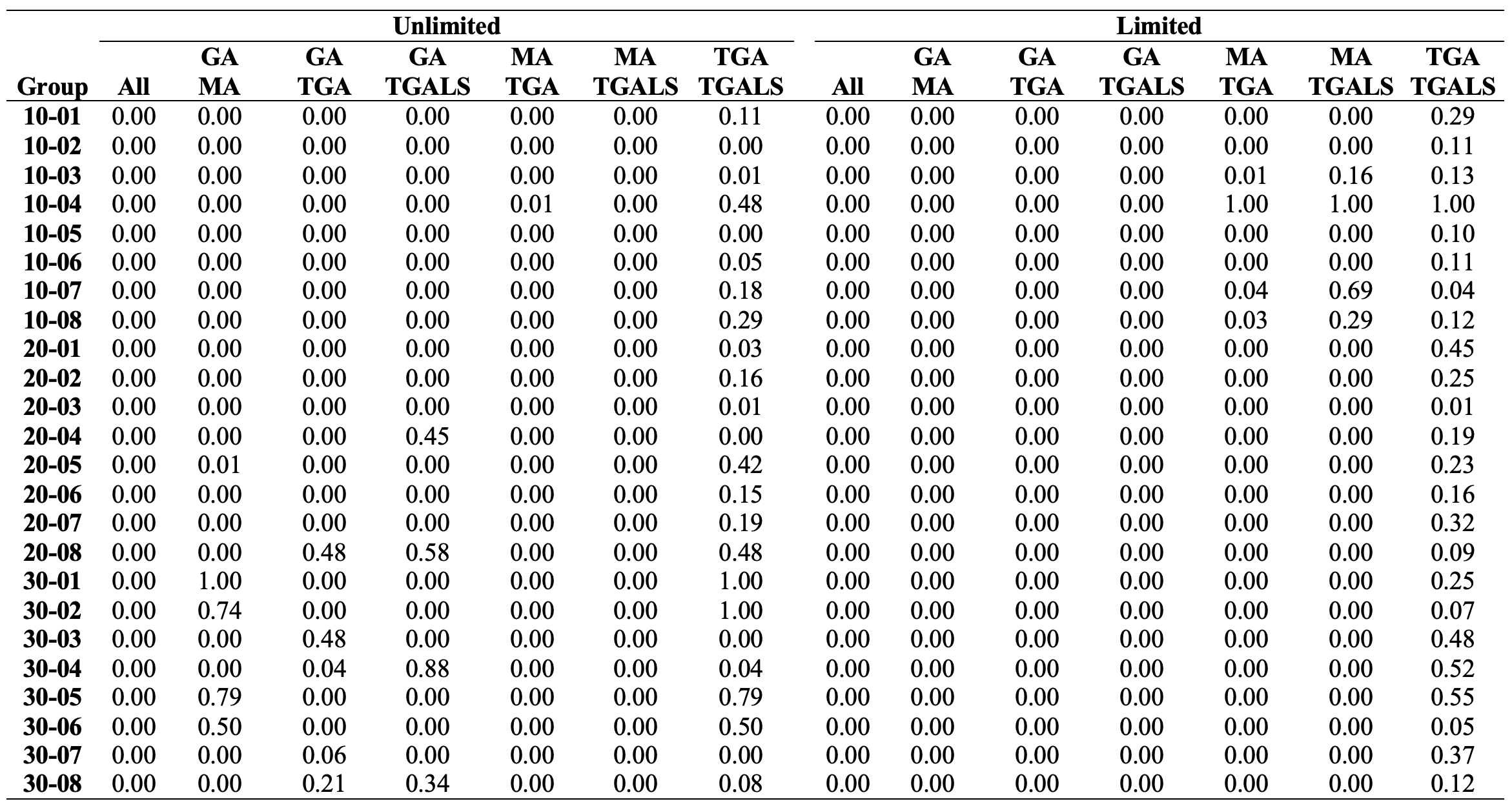
Table E exhibits the best solutions currently known for each instance. These values were registered during the research and then optimized through a series of runs. This process can be understood as execution with virtually infinite processing time. To attempt to find the optimal solution for each instance, we executed a set of consecutive runs where we configured the Gurobi Cutoff parameter to have the cost of the best solution previously known, serving as the upper limit. The column "Opt" indicates if the solution in the column "BKN" is proven to be optimal or not.
TABLE E
Best known solutions
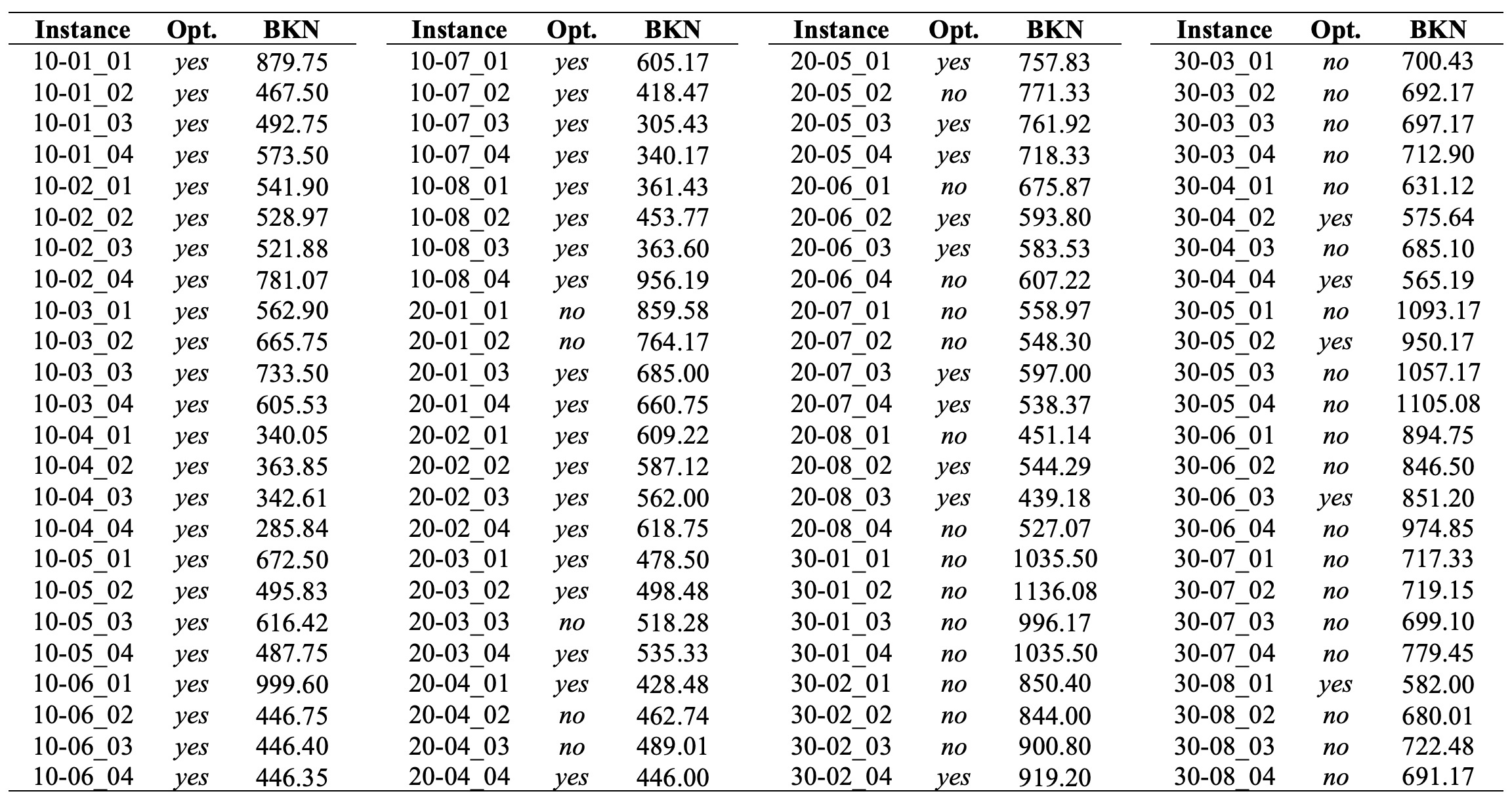
Click here to back to the previous page.






